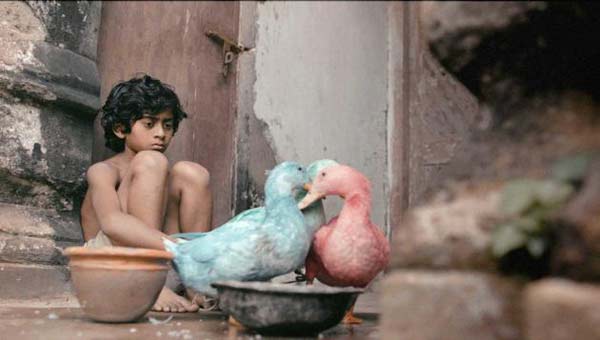
Kerala, India (BBN)-Jalaler Golpo (or Jalal’s Story), directed by Bangladeshi filmmaker Abu Shahed Emon, chronicles the life of Jalal, who finds himself drifting away in the strong currents of destiny, without being able to steer his life in a manner he chose.
Having been screened at several film festivals across the world, Jalaler Golpo was selected to the Competition section of the 20{+t}{+h}International Film Festival of Kerala, reports The Hindu.
The film focuses on three periods in Jalal’s life with the first chapter (The Arrival) beginning with his discovery by a group of fishermen, who finds the infant floating in the river in a pot.
His arrival coincides with good fortune in the village which enjoys an abundance of fish catch.
Miraj, who adopts Jalal, spares no time in claiming that the child was a blessing.
The villagers soon make a beeline for a few drops of water touched by the ‘holy child’.
However, as fate would have it, they soon fall on rough times and hold the infant as responsible for the bad luck. He is branded the ‘cursed child’ and is thrown into the river.
The subsequent chapters, The Association and The Departure, show Jalal being ‘adopted’ yet again at the ages of 9 and 19, only to be abandoned for no fault of his.
The film ends with Jalal, a poor swimmer, attempting to rescue another baby, who has been set adrift in the river, as he had been 19 years ago.
The climax succeeds in making the viewer feel for the protagonist and fear that the infant would suffer a similar fate.
DIRECTOR THRILLED
The filmmaker is thrilled with the reception for his debut film.
Emon, who sees himself as a ‘work-in-progress’ director, says that Jalaler Golpo, produced at a below-average budget of BDT 60 lakh (approximately Rs.51.50 lakh) and filmed with a cast which has only five professional actors, has exceeded expectations.
The film has been selected as the official entry from Bangladesh for the 88{+t}{+h}Academy Awards for the Best Foreign Language Film.
Emon, 32, belongs to a group of young filmmakers who have been striving to carve a niche for Bangladeshi cinema.
“For long, the audience of Bangladesh has been treated to movies made on the lines of Bollywood films that lacked content and were high on glamour quotient. This has prevented Bangladeshi cinema from developing an identity of its own,” he says.
This has resulted in the dwindling number of viewers.
The number of theatres too has come down to around 300 from the 600-odd nearly five years ago.
Emon says the dearth of skilled technicians is a major hindrance to the film industry.
“The need of the hour is a dedicated film school on the lines of Film and Television Institute of India (FTII) in Pune,” says the filmmaker.
BBN/SK/AD